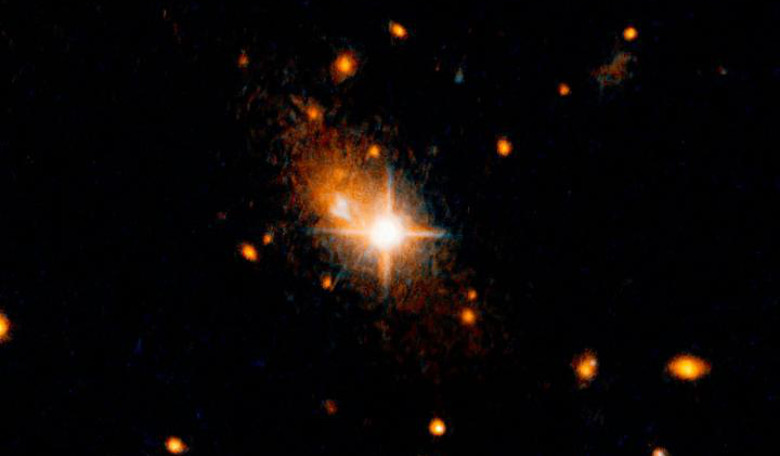Aside from proving Einstein right, it appears gravitational waves could act as powerful bailiffs, as astronomers have detected a rogue black hole weighing more than 1 billion suns, that has been kicked out from its parent galaxy by these ripples in space-time.
By using the NASA/ESA Hubble Space Telescope, an international team of astronomers have found that a quasar, the tell-tall sign of a supermassive black hole, is approximately 35, 000 light-years from the centre of its host galaxy known as 3C186; this is more than the distance between the Sun and the centre of the Milky Way.
This is particularly unusual as black holes and their supermassive counterparts, normally reside in the centres of galaxies. Although other scenarios to explain the observations cannot be excluded, the main culprit that researchers believe has the strength to accomplish such a feat are gravitational waves.
"We estimate that it took the equivalent energy of 100 million supernovae exploding simultaneously to jettison the black hole," describes Stefano Bianchi, co-author of the study, from the Roma Tre University, Italy.
It is not the first time that this type of scenario has been suspected, however so far, no confirmed ejections via gravitational waves have been confirmed.
In order to expel such a massive object from its home, scientists theorise that around 1 - 2 billion years ago, a merger between two galaxies – each with central, massive black holes – took place. As the two black holes did not have the same mass and rotation rate, gravitational waves created as the black holes whirled around each other, were cast along one direction more strongly than the other. As the merger completed, the imbalance of the emitted gravitational waves produced a kick that booted the newly-formed single black hole out of the galactic centre.
“If our theory is correct, the observations provide strong evidence that supermassive black holes can actually merge," explains Stefano Bianchi on the importance of the discovery. "There is already evidence of black hole collisions for stellar-mass black holes, but the process regulating supermassive black holes is more complex and not yet completely understood."
It is thought that not every merger between black holes generates an imbalance in gravitational waves, therefore the team are lucky to have caught this unique event. To complement their existing data and to provide further insights into the nature of this rare object, the researchers are hoping to use other telescopes such as the Atacama Large Millimetre/Submillimetre Array (ALMA) along with more Hubble time, to more accurately measure the speed of the black hole and its surrounding gas disc.











